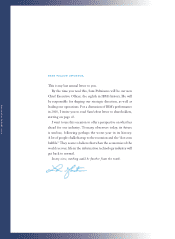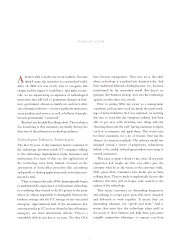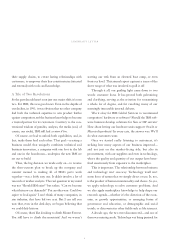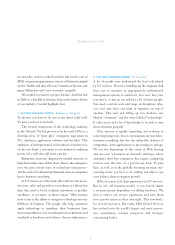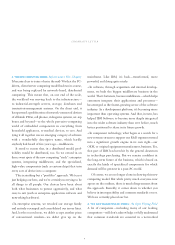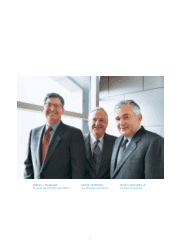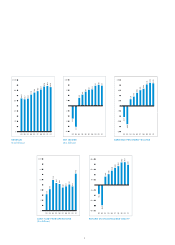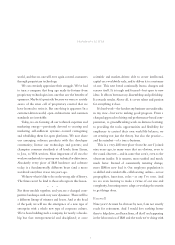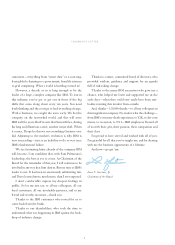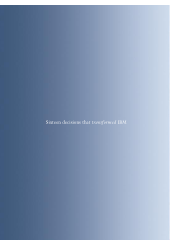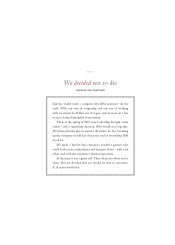IBM 2001 Annual Report Download - page 4
Download and view the complete annual report
Please find page 4 of the 2001 IBM annual report below. You can navigate through the pages in the report by either clicking on the pages listed below, or by using the keyword search tool below to find specific information within the annual report.
2
their supply chains, to create lasting relationships with
customers, to empower their key constituencies (internal
and external) with tools and knowledge.
A Tale of Two Revolutions
So the past decade hasn’t seen just one major shift, it’s seen
two. For IBM, this was good news. Even in the depths of
our decline, in 1993, it was obvious that no other company
had both the technical expertise to win product battles
against competitors and the business knowledge to become
a trusted partner for its customers. Contrary to the con-
ventional wisdom of pundits, analysts, the media (and, of
course, our rivals), IBM still had a raison d’être.
Of course, we had to unlock both capabilities, and, in
fact, make them feed each other. That goal
—
creating a
business model that uniquely combines technical and
business innovation, a company with one foot in the lab
and one in the boardroom
—
underpins the new IBM we
set out to build.
Thus, the big decision we made early on
—
to reverse
the then-current plan to break up the company and
commit instead to making all of IBM’s parts work
together
—
was a fairly easy one. It didn’t involve a lot of
research or market analysis. The real question in my mind
was not “Should IBM exist?” but rather, “Can we become
what this new era demands?” Put another way: Could we
aspire to lead again? I can’t think of many companies, in
any industry, that have led two eras. But I can tell you
now that, even in the dark days, we began believing that
we could defy history.
Of course, that’s like deciding to climb Mount Everest.
You still have to climb the mountain! And we weren’t
starting our trek from an elevated base camp, or even
from sea level. This annual report captures a sense of the
sheer range of what was involved to pull it off.
Through it all, our guiding light came down to two
words: customer focus. It has proved both galvanizing
and clarifying, serving as the criterion for reexamining
a
whole lot of dogma, and for resolving many of our
seemingly intractable internal debates.
Was it okay for IBM Global Services to recommend
competitors’ hardware or software? Should the IBM soft-
ware business develop solutions for Sun or HP servers?
How about letting our hardware units support Oracle or
Microsoft products? In every case, the answer was: We’ll
do what customers want.
Once we started really listening to customers, it’s
striking how many aspects of our business improved
—
and not just on the market-facing side, but also in
procurement, with our suppliers and even in technology,
where the quality and quantity of our output have bene-
fited enormously from exposure to the marketplace.
This is important. The relationship between business
and technology isn’t one-way. Technology itself isn’t
some force of nature that we simply direct or use. It, too,
is the product of human intentionality and choice. So yes,
we apply technology to solve customer problems. And
we also apply marketplace knowledge to help shape our
research agenda
—
whether it’s the direction of the econ-
omy, or growth opportunities, or emerging forms of
governance and education, or demographic and social
trends, or discoveries in other fields such as life sciences.
A decade ago, the two were disconnected
—
and one of
them was running amok. Technology was being pursued for
chairman’s letter

